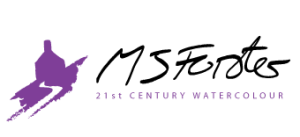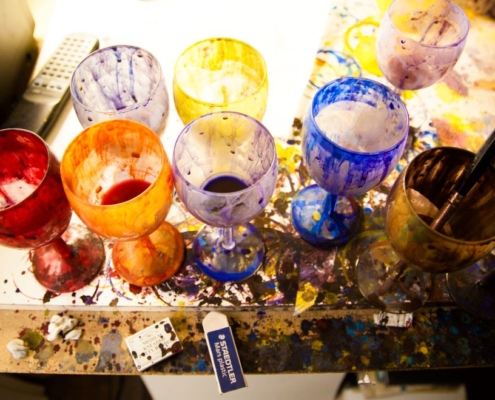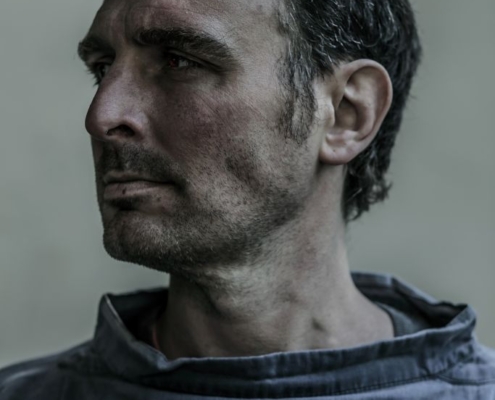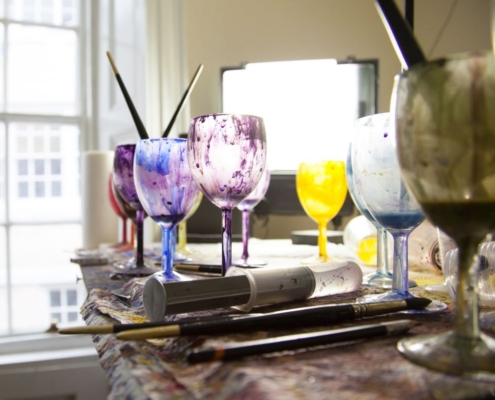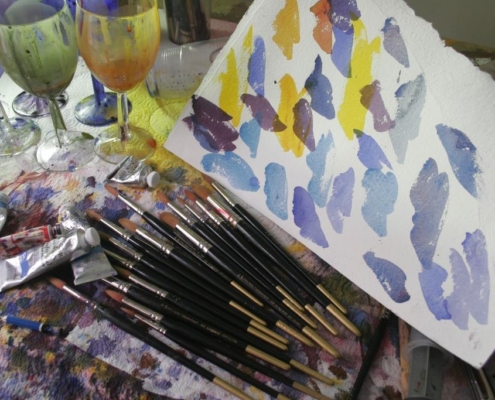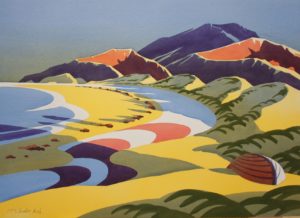About M J Forster
21st Century Watercolour
M J Forster is a British artist best known for his original watercolour landscapes. Although he stands alone as an artist that has a plethora of styles and subjects including three dimensional work including a range of stunning lampshades and hats.
He has always been a professional artist opening his first studio gallery in Hexham Northumberland in 1997. His current studio is situated in the centre of Corbridge the popular destination village in the heart of Northumberland’s Tyne Valley.
Matthew has exhibited extensively with galleries across Britain and has participated at over 50 UK and European art and trade fairs. His original paintings have been received all over the world and his first retrospective book illustrating his broad depth of ideas and techniques was published in 2014.
He has also taught watercolour at workshops he’s organised and has a You Tube channel. This is a great learning resource for the aspiring painter with hundreds of video’s of Matthew actually painting. For example look at this short video on colour mixing and browse the channel https://www.youtube.com/watch?v=ZC442-ad9cQ
The Northumberland artist will continue to develop and refine his original paintings in both his traditional and contemporary styles. These atmospheric and affordable original watercolours will enhance any interior.
If you have any enquires about the original paintings or would like to arrange a viewing by appointment at his studio in Northumberland email him at hello@ombrecollection.com
More recently the artist has focused on his geometric patterns with particular attention given to colour theory. He has recently launched a new venture called Ombre. The design range can be applied across a multitude of applications. You can read more about it on the Ombre website. www.ombrecollection.com
Read About The Journey So Far
Matthew enjoys the structure and the discipline of working a regular hours and can be found at the studio in weekday hours painting his original Northumberland landscapes amongst other work.
Read here for more detail about Matthew talking about the history, origins and processes involved in his work.
“I have no problems finding inspiration although after 35-40 hours of painting a week that is more than enough as it can be physically intense. It’s always tough in the studio as I paint standing up which has its stresses. I use an old easel from the Swan Hunter shipyards, it’s a fantastic piece of engineering and is essential to my painting process.
I’ve always been passionate about my painting and was encouraged as a child although it wasn’t until my early teens that I began to realize it’s potential. Not just in terms of how I enjoyed it but the ability to actually make a living as an artist. My interest was nothing to do with art at school although I always enjoyed copying images, anything and everything. Then my interest in landscape developed particularly The Lake District, the coast and castles of Northumberland and the mountains of Scotland. I loved to paint empty, wild landscapes and that is where my interest in water colour painting began.
I was fortunate that a local artist demonstrated to me the basic principles and techniques of watercolour. It gave me a confidence to build on this knowledge and through practice I was able to understand and overcome the perceived limitations of the medium resulting in my own distinctive style and techniques.
The key to successful watercolour painting is all about the application of the paint, that’s what drives me, it’s the whole point of putting the paint on the paper and creating, it’s like magic. Watercolour painting is a highly technical medium and without the skill of application you stand no chance of creating an accomplished landscape painting. There is a point where solitary dedication, practice and above all ideas become the essential components.
When I was very young and first learning to paint, I enjoyed interpreting the watercolours of Rowland Hilder. He was a superb draughtsman; his compositions were perfectly balanced alongside a solid understanding of the medium. He was able to control the paint yet retain an expressiveness which is also the key of my work.
Post A-levels I completed a foundation course specialising in photography. A twist of fate took me to Loughborough University where I completed a degree in Sports Science. I spent all my spare time painting and drawing during the holidays I would organize selling exhibitions to fund my university life. I’ve always found it very rewarding having that face-to-face contact with clients. I was selling my work aged fourteen and always had an annual exhibition even as a teenager.
After graduating from University I established my own studio gallery in Northumberland in 1997. This was highly successful both in terms of my development as an artist and ability to run a business.
Three years later having established myself I felt the need to travel. If I was to be taken seriously as an artist I first needed to deepen my observational drawing. Painting sales had allowed me to fund a two-year period abroad spending time in Mexico, North America, and Asia before settling in Otago New Zealand for a time. During this period I immersed myself in painting and sketching literally non-stop. I also spent a great deal of time researching painting and its history. This enabled me to produce a very wide body of work that I returned to the UK with in 2003.
I then set up an art gallery again in Newcastle upon Tyne for six years. It was a period of massive experimentation and it’s hard to describe how much work I achieved in that time. On top of the basic skills, I had obtained while traveling I pushed my work hard in a number of directions. Not just the traditional landscape painting but an enormous amount of abstract work.
in 2009 I came back up the Tyne Valley to Hexham and Northumberland and it was then that my new style I called Überpainting emerged. I decided to confront the three main components of 2-dimensional work, tone, line and colour. In watercolour I sought to combine these components into a sense of hyper-reality.
This was a relatively natural development and I could see the roots of this style in my work from six years ago. I’d been painting within what I now term the Über process for a while when I realized the significance and potential of the new work and fully embraced it. From then on in terms of landscape painting a whole new world had opened up to me.
The structure I use to develop the work remains unchanged. There really are no short cuts to produce these original landscape paintings. It’s like learning a language, I’m now fairly fluent it’s just what I’m saying is becoming more complex. The process is also becoming stretched over time. There are images I now return to on an annual basis as they act as a marker for me to see how I’ve developed both my ideas and technical skill.
I liken the Uberpaintings to a sonnet in the sense that they are created within a restrictive framework and out of this restriction a greater creativity emerges. I intend the finished pieces to be a vision of perfection. The process and structure will morph in response to different subjects and I have already introduced the idea of grading at least one of the washes as opposed to having them all flat. Even a change as small as this opens up an entirely different range of possibilities. I have already experimented with still life and figurative work in addition to the landscape painting.
Ongoing I want to be creating outstanding watercolour landscapes of Britain and Northumberland in particular in both traditional and contemporary styles. I have been painting in this medium for 30 years and feel that I’m now understanding its potential.”
